Xi'an keeps its luster by mixing past and present
Xi’an keeps its luster by mixing past and present
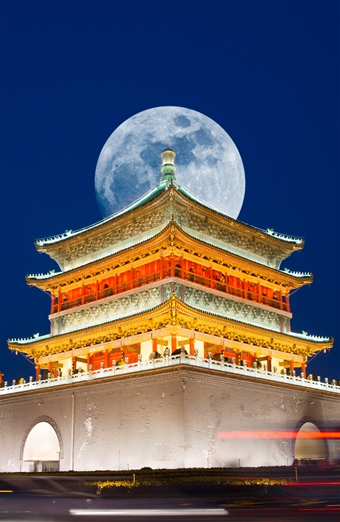
The ancient city gate tower of Xi'an Photo: VCG
Editor's Note:
Xi'an of Northwest China's Shaanxi Province will host the 14th National Games until September 27. Xi'an is a must-see city for everyone from ordinary tourists to powerful world leaders. Over 200 heads of state and leaders including Britain's Queen Elizabeth II and French President Emmanuel Macron have visited Xi'an. The charm of the ancient city still shines due to its peerless history as the starting point of the Silk Road and as home to the Terracotta Warriors and the injection of new vitality created by today's youth.
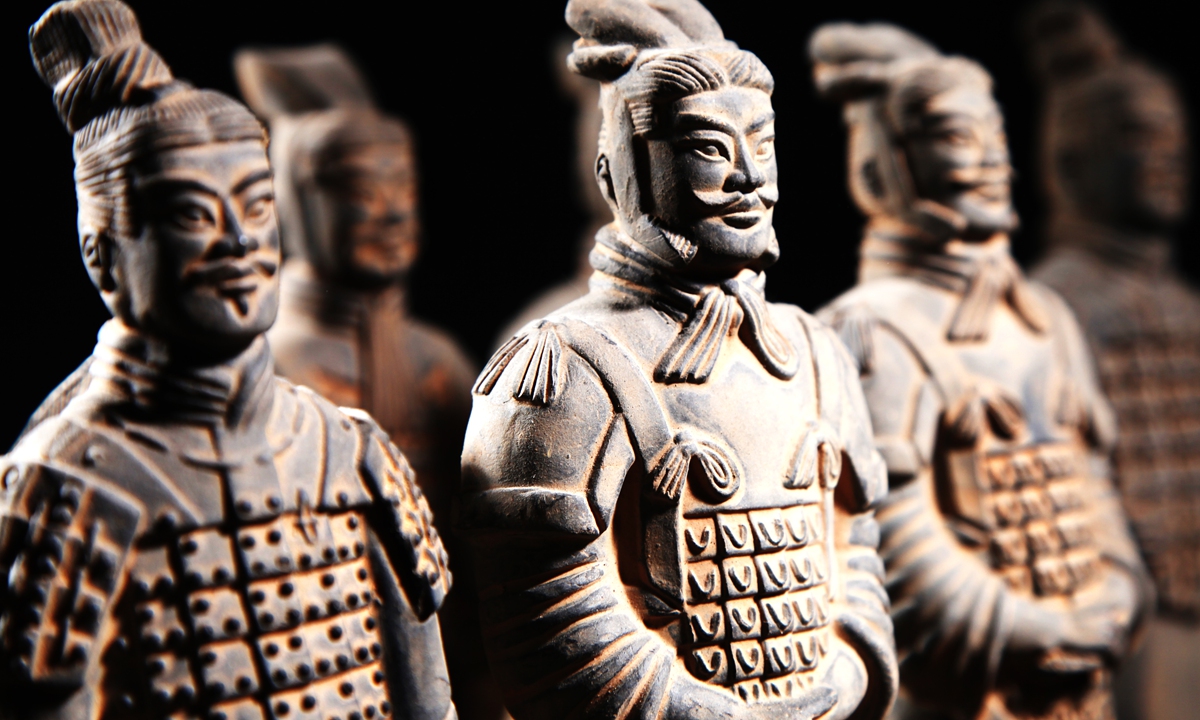
A Terracotta Warrior Photo: VCG
Ancient sites - Treasures from the past that should not be missedXi'an, which had been the capital city for over ten dynasties, attracts tourists from all over the world who come to see the unique and rich cultural heritage of humanity.
Terracotta Warriors
An imperial icon of ancient Chinese art and civilization, the Terracotta Warriors were built in Qin Dynasty (221BC-206BC) funerary tombs for China's first emperor.
This collection of terracotta sculptures feature warriors with different appearances, chariots and horses, and were made with the purpose of protecting the Emperor Qin Shi Huang in the afterlife. The unprecedented site was discovered in 1974 by locals. Currently three pits have been discovered containing about 7,000 warrior figurines, 100 chariots and 100 war horses. The majority of sculptures remained buried in the pits near Qin Shi Huang's mausoleum. It was inscribed as a UNESCO World Heritage Site in 1987.
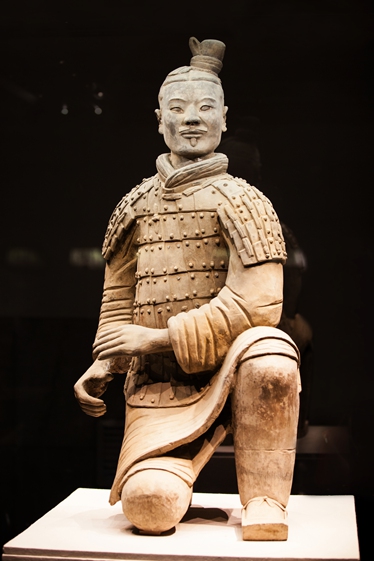
A Terracotta Warrior Terracotta Photo: VCG
Giant Wild Goose Pagoda
This marvelous landmark in Xi'an was built during the Tang Dynasty (618-907).
Buddhist monk and scholar Xuangzang presided over the construction of this building in order to preserve the Buddhist scriptures he had brought back from India to China via the Silk Road. The pagoda is the earliest and largest still existing brick tower from the Tang Dynasty. It was originally five stories tall, but it was later increased to nine stories. It is a typical example of the ancient Indian Buddhist temples that were introduced to China with the spread of Buddhism. This pagoda was added to the UNESCO World Heritage List, along with many other sites along the Silk Road in 2014.
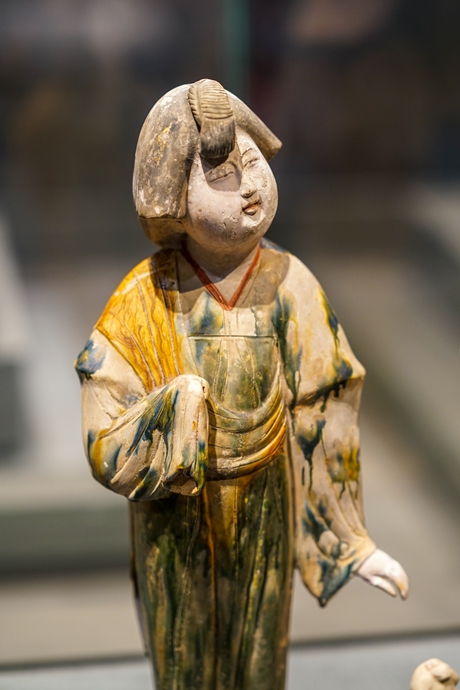
A statue of a Tang maid Photo: VCG
Xi'an City Wall
Built during the Ming Dynasty (1368-1644), it is the largest and best-preserved ancient city wall in China.
The city wall is located in the center of Xi'an, what is called the "old town." The wall reaches a height of 12 meters and has a width that ranges from 12-14 meters at the top to 15-18 meters at its base. The wall forms a rectangle 13.74 kilometers in length. The Xi'an City Wall is currently on the tentative list of UNESCO's list of World Heritage Site.
Inclusiveness and integration - Islamic influences
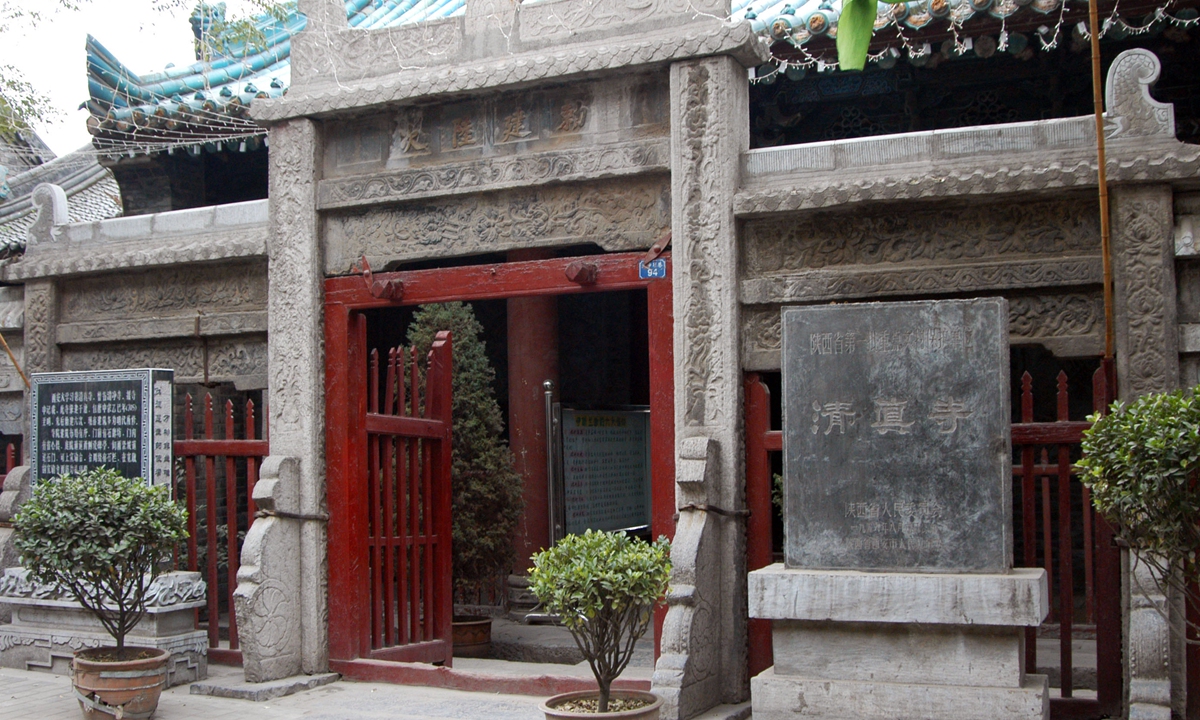
The Great Mosque Photo: VCG
As the starting point of the ancient Silk Road, Xi'an once served as an indispensable landlocked port for East and West communication. Oriental products such as silk and porcelain were exported to the Middle East from Xi'an and the most exotic of foreign items entered through the city before they were distributed to every corner of ancient China. As the most famous capital of ancient China, Xi'an was also one of the most bustling and cosmopolitan cities in the world. The integration of various cultures gave rise to a unique and inclusive city.
Corridor of culture
The ancient Silk Road originated from the Western Han Dynasty (206BC - AD25) as a corridor for trade that stretched from the city of Xi'an out through what is today Northwest China's Gansu Province and the Xinjiang Uygur Autonomous Region to far-off countries in the Middle East such as Iran, then called Persia.
The Silk Road was not just a corridor for the trade of goods, it was also the site from which Chinese culture and technology made its way abroad. At the same time, as Chinese culture was heading out into the world, other cultures, such as Islamic culture, were also making their way into China through Xi'an.
The result is that the city is a place where you can spot symmetrical mosques and enjoy Turkestan street food such as kebabs.
The Great Mosque in Xi'an is the oldest and one of the most well-preserved Islamic sites in China. Located in the old town of the city, is was built in 724 during the Tang Dynasty.
Unlike the commonly used round dome seen in many Islamic establishments, the Great Mosque was built in the classic Chinese style, decorated with pavilions, lots of trees and stylish stone carvings.
Close to the mosque is the 600-year-old Xiyang Market, which was once a major trading point for the mutton trade.
The Muslim residents, who have been living around the block from the mosque for generations, still follow many Islamic traditions such as daily prayers.
Young and modern Xi'an
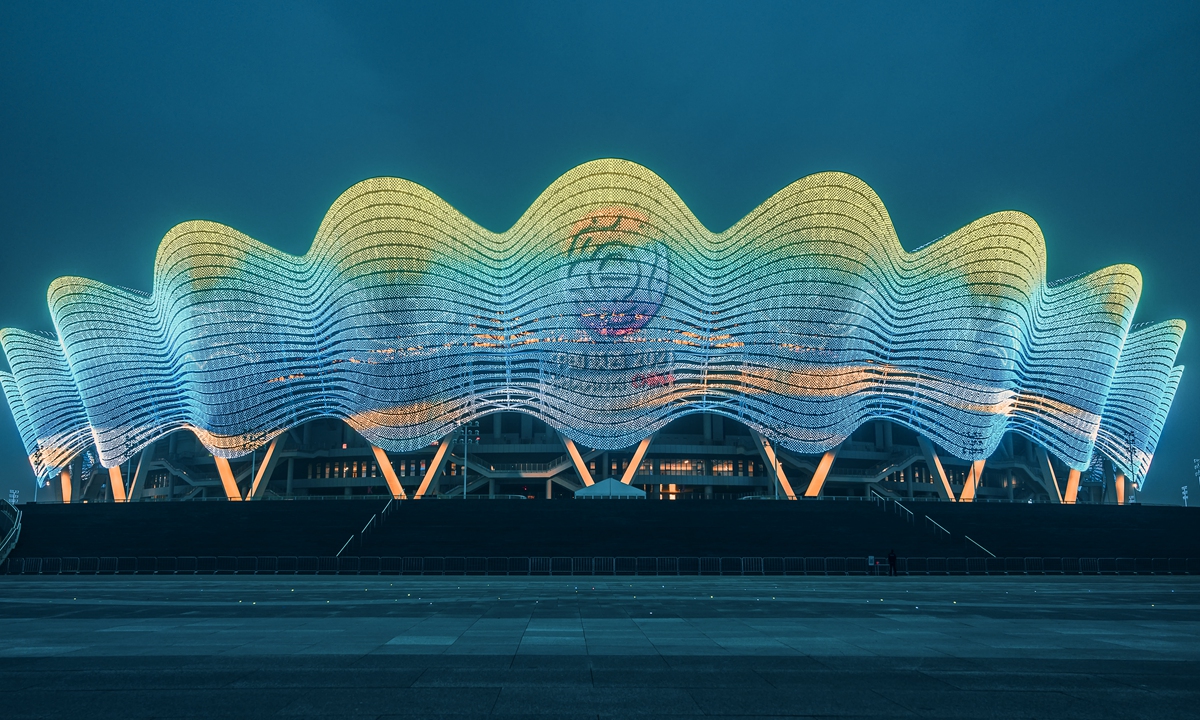
Xi'an Olympic Sports Center Photo: VCG
Xi'an has many cultural and historic sites, but that does not mean the city is stuck in the past; it is also a very modern international metropolis.
The city has kept up with the times by remaining energetic and youthful, which has positioned it as a great host for numerous sports events and a major destination for visitors from around the country.
Xi'an is the economic and cultural center of Northwest China as well as an important base for scientific research, education and industrial manufacturing in China.
Many innovative and high-tech projects have been launched in the city. Chinese e-commerce giant Alibaba developed a branch office named "Silk Road" in Xi'an in 2018, which aims to expand eight business sectors, including retail and finance, in the city.
Another e-commerce giant JD launched its unmanned aerial vehicle (UAV) project in Xi'an in 2017.
The first heavy UAV was successfully produced in June 2018. Developed to make deliveries to rural areas more simple, it can fly more than 1,000 kilometers, according to techweb.com.
Seeking innovation
To maintain the vitality of its culture, Xi'an has expanded beyond the ancient sites inherited from the past to seek out new innovative paths to attract more young people to the city.
Xi'an has created many new cultural icons in recent years, like the dancer who went viral online and was all the rage on short video platforms in 2019.
Videos of the beautiful woman dressed in Tang Dynasty costume clothing attracting crowds of curious people numbered among the hottest content on Chinese social media platforms in 2019.
The show can be seen at Great Tang All Day Mall, a must-visit nightlife and shopping district in Xi'an where clusters of newly constructed Tang Dynasty-style buildings are lit up with colorful lights in the perfect mix of ancient designs and a modern touch.
Tasty local delicacies to satisfy your appetite
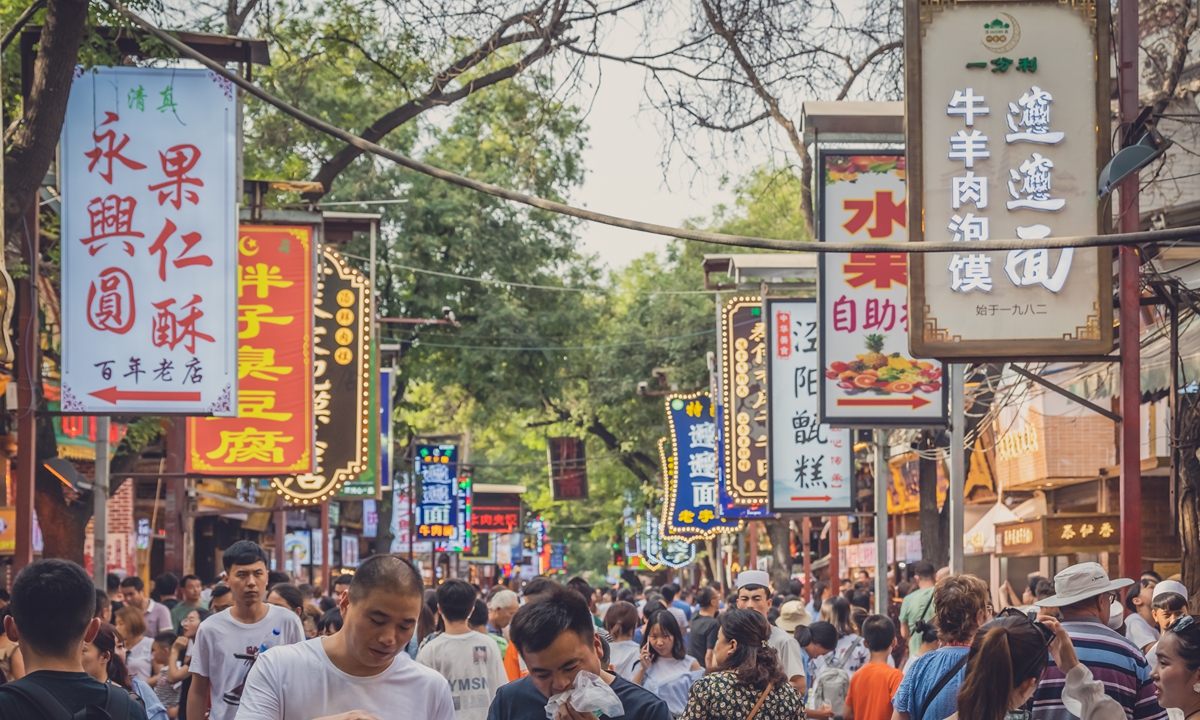
The Muslim street Photo: VCG
The rich historical legacy and culture of Xi'an has also allowed a distinctive cuisine culture to develop in the city. During the Tang Dynasty, Xi'an was a place where people of different religions mixed together. Among them, Islamic culture still has a defining influence on local food today.Roujiamo, or shredded meat burger, is definitely a brand for the city's culinary culture. Roujiamo means "meat in bread." The bread in this case is a type of round flatbread with a chewy texture that forms a pocket in which various shredded braised half-lean-and-half-fatty meat such as beef, pork or mutton can be stuffed. The shredded meat burger is not only popular among Xi'an residents, but also loved by tourists and people from different cultures due to its simple but rich flavor.
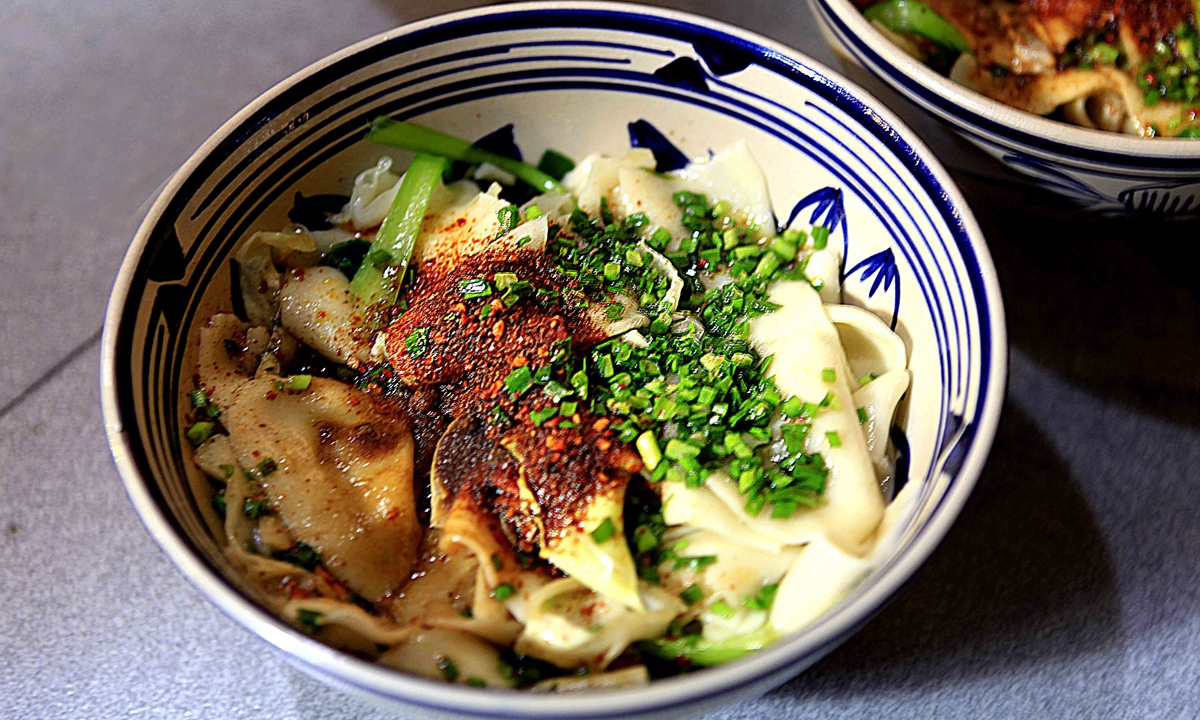
Biangbiang noodles Photo: VCG
"This is my favorite food choice whenever I visit China. Breakfast, when drinking, you name it. It is a comfort food for me," Jihoon, a foodie from South Korea, told the Global Times on Saturday.
Xi'an is also known for its noodle dishes such as liangpi (cold noodles) and biangbiang noodles. As the name implies, liangpi is served cold with shredded cucumber and aromatic chili oil. The noodles are thin and semi-transparent.
Biangbiang noodles are known for the chewy texture that is a result of them being stretched out by hand. The thick nature of the noodles has also earned them the name the "belt noodles."
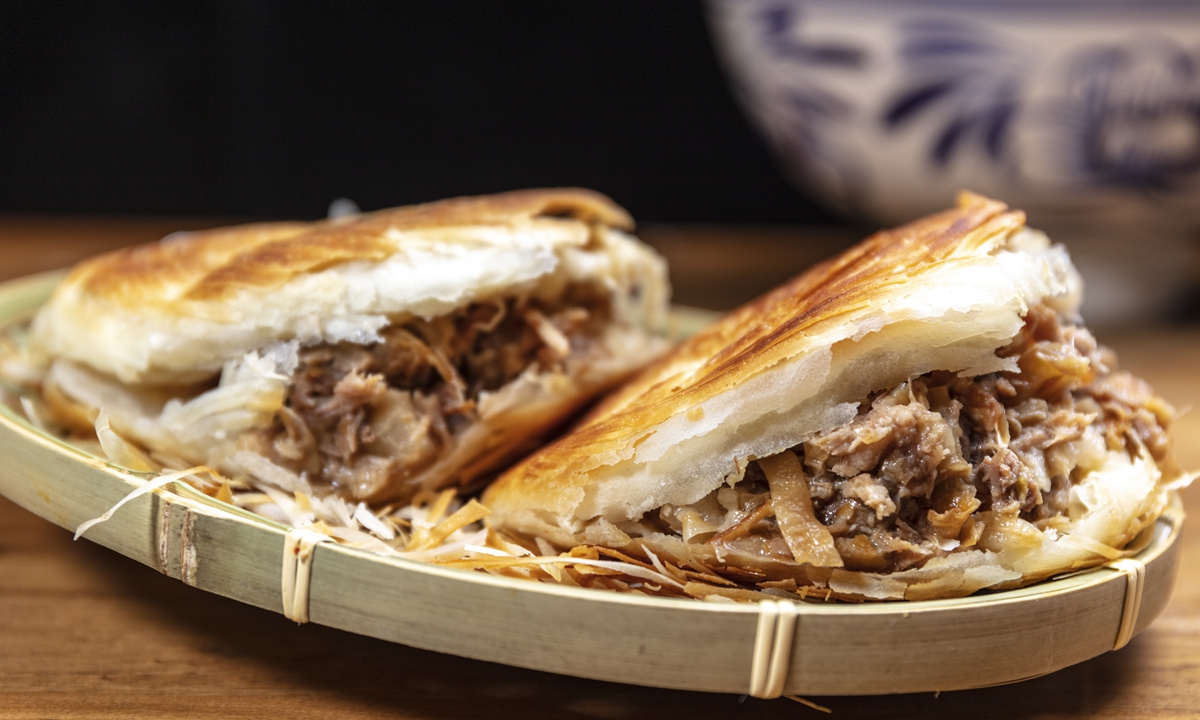
Roujiamo Photo: VCG
Cold drinkIn Xi'an, a particularly popular soft drink Ice Peak is part of many local's childhood memories.
First launched in 1953, the beverage still comes in a retro glass bottle with a metal cap. While many say it tastes like ordinary orange soda, this particular beverage is still a point of pride for local people.
"I have loved it since I was a child. I missed it not because of its flavor but the whole happy memories attached to it," Ganni, a Xi'an local who studied in Germany, told the Global Times.
Snack heaven
The city's Muslim Street is a snack street that is a food heaven for locals and tourists. Not only can all the iconic Shaanxi dishes be found there, the street also has many traditional-style buildings as well as various-sized mosques. It is a "roaming feast" for visitors as you move from stand to stand grabbing various snacks and enjoy the ambience created by the beautifully designed buildings.




